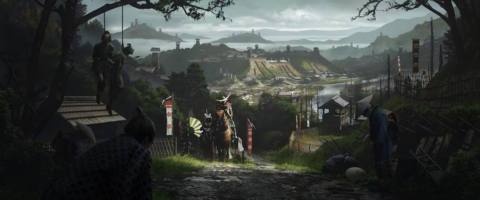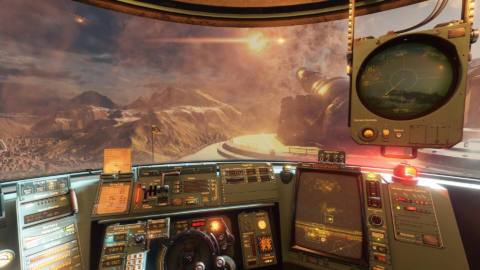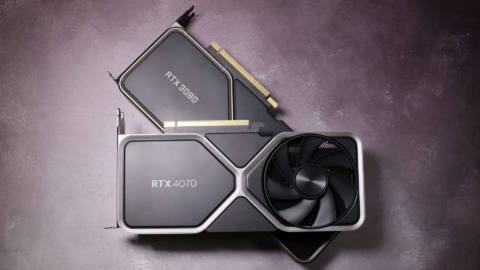What is it? A bombastic third-person shooter/brawler set in the Warhammer 40,000 universe.
Release date September 9, 2024
Expect to pay $60/£55
Developer Saber Interactive
Publisher Focus Entertainment
Reviewed on Nvidia Geforce RTX 3080, AMD Ryzen 9 5900X, 32GB RAM
Steam Deck TBA
Link Official site
Over the course of its roughly eight-hour singleplayer campaign, Space Marine 2 presents the Warhammer 40,000 setting at a whole new level of spectacle. It feels huge, authentic, and visually sumptuous. But the sad truth is that I was tired of actually playing it before those eight hours were even up.
It's disappointing, because the game does make a fantastic first impression. As space marine warrior Lieutenant Titus, returning from the first game, you're dropped straight into a war against the insectile tyranids, and it's simply awe-inspiring looking out at the horizon and seeing their forces crawling over an entire mega-city. Developer Saber Interactive's swarm tech, already perfected in otherwise limp co-op shooter World War Z, is used to wonderful effect to sell the vast scale of war in the setting.
Hyper-gothic architecture towers over you, and as a genetically-modified, power-armoured super-soldier, you tower over the normal humans who scurry around your feet. Like the first game, Space Marine 2 understands that these warriors of the Imperium need to feel massive, weighty, and powerful, far beyond your usual bulky sci-fi protagonist.
In combat you're a force of nature, raining down explosive hell on tides of enemies before drawing a combat knife as long as a man and crashing into melee like a furious steam train. Larger elite enemies striding through the flood, such as grinning, chitinous tyranids warriors, are your priority targets. You ram through the crowd to reach them for melee duels, parrying their blows and smashing at their defences until they stand woozy and stunned, ready for an execution animation that restores your shield bar and sees them ripped to gory pieces and frequently stabbed to death with their own appendages.
For your first couple of hours of fights, it looks and feels awesome, but unfortunately it's not long before cracks start to show. The biggest problem is those executions which at first feel so cool. Other than the swarming minions, every enemy will enter that stunned state once they're at low enough health, and because executions are one of your only ways to mitigate damage, it's always to your advantage to perform them. The result is that you're constantly sprinting between flashing red foes to watch the same canned animations over and over, a problem that only escalates as the game sends increasing numbers of elite troops at you in its later stages.
Your two AI companions—fellow Space Marines Gadriel and Chairon—will even stun enemies for you and politely leave them for you to finish off while foes around you stand awkwardly waiting for their turn. At first I found the absurdity funny, but even that wore thin before long.
Only war
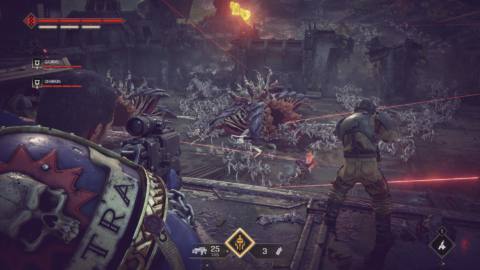
Parries are oddly inconsistent—some attacks come with a huge, flashing indicator and a giant timing window, while others aren’t telegraphed at all and are easily missed in the crush.
The whole system of combat is warped around this one mechanic. For example, because executions have to be performed at melee range, and are so vital for staying alive, long-range combat is largely pointless, despite the array of scoped weapons that cater for it. But equally the various close-range guns have little use either, because at that range you might as well just draw your melee weapon, and their lack of versatility will leave you caught out against certain enemy types. The sensible choice is always just your standard, mid-range boltgun. That’s thematically appropriate, perhaps, but not ideal in a game that already struggles to offer variety in its repetitive combat encounters that far too often simply see you fighting the same small number of enemy types over and over.
Beyond that, fights simply feel rough around the edges. Parries are oddly inconsistent—some attacks come with a huge, flashing indicator and a giant timing window, while others aren’t telegraphed at all and are easily missed in the crush. Against some attacks, parries will automatically kill or stagger the foe, but for others they don’t—instead, you want to try and parry or dodge with perfect timing (a window that itself feels inconsistent) in order to be able to perform a bolt pistol counter-shot and recover some shield. But then sometimes simply a charged melee attack will get you that counter-shot instead. None of it quite clicks together.
The whole combat system is simply messy in this way—it feels like the developer iterated on it several times but forgot to go back and delete their old work, so multiple clashing ideas sit jumbled together. There are individual elements that work well—Titus feels huge without being slow or unresponsive, iconic Warhammer 40,000 weapons such as the thunder hammer are as impactful and empowering as they should be, and there’s a great gory sense of humour to the animations. But it doesn’t add up to a coherent vision, and over the course of the campaign the charm of the parts that do work is tarnished more and more by the repetition and frustration of the ones that don’t.
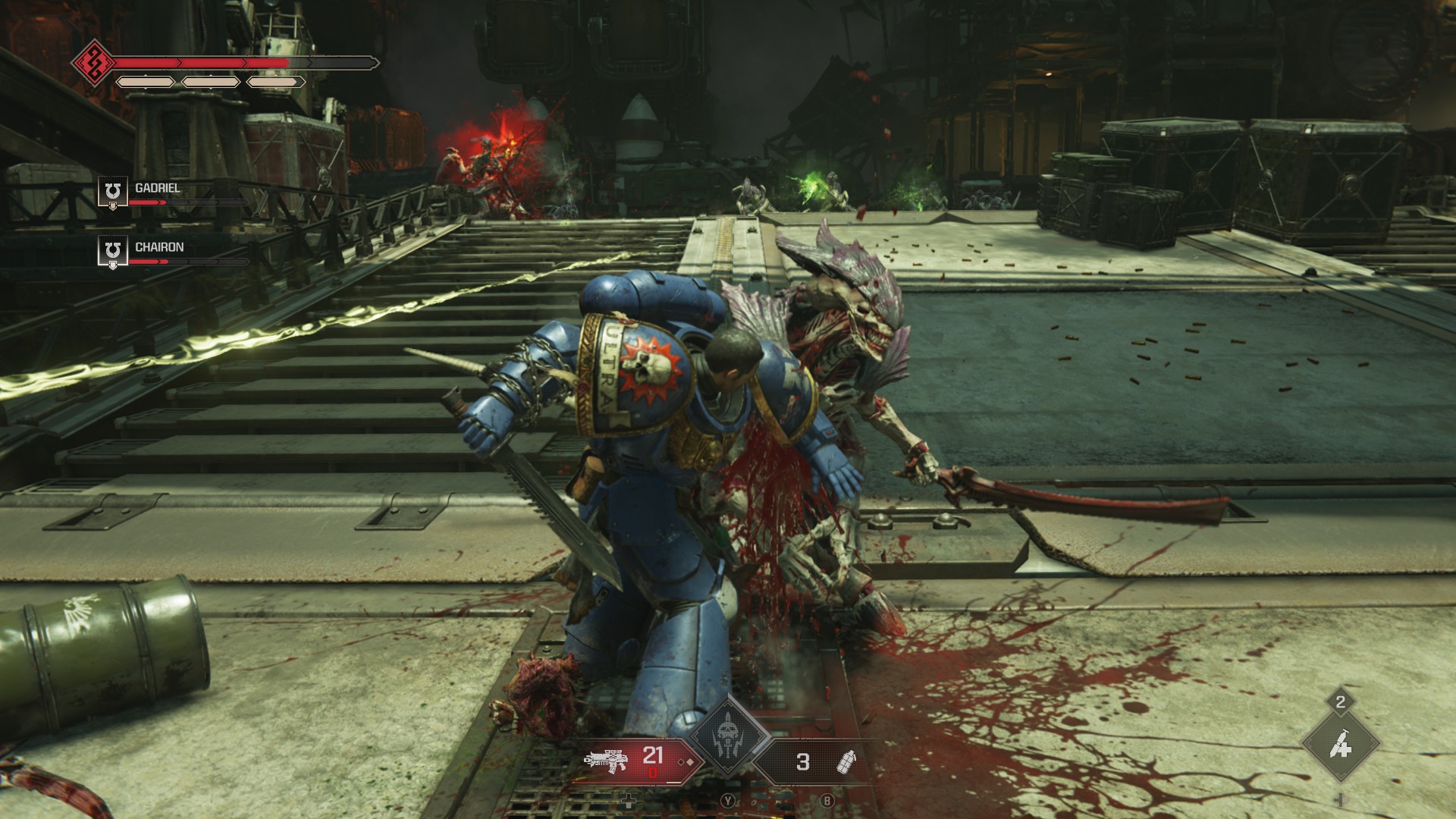
For a full run down of the game’s technical performance, check out our full analysis from Nick on our expert hardware team.
In some ways, the campaign is refreshingly focused—with no levelling system, unlocks, or side missions, and only a tiny smattering of collectibles, it’s an antidote to the cluttered and bloated worlds of modern action games. For the most part it’s just you and the combat setpieces, and when the game’s firing on all cylinders, especially early on, that works. There’s a real ambition and imagination to its spectacle, and the short campaign is full of sights to delight Warhammer 40,000 fans in particular.
But again it’s undermined by what you’re actually doing. Much of the encounter design feels overly inspired by the game’s co-op mode (more on that later)—you’re constantly standing in a circle until a bar fills up, or defending a big inanimate object, or running between computer consoles pressing buttons, while arbitrary waves of enemies spawn at you. (You even have to wait for your two allies to “assemble” with you at the end of every area before you can push a button to move into the next one.)
There’s a mid-game sequence, for example, where an enormous swarm of tyranids attempt to hurl themselves bodily into a colossal power generator to try and destablise it. It’s a wonderful visual—that perfect Warhammer mix of cool, scary, and completely absurd—but it’s essentially a cross between wave-based survival and an escort mission, and the actual process of trying to keep the generator’s health from ticking down while countless creatures much smaller and faster than you sprint at it is more tedious than epic.
The Imperial Truth
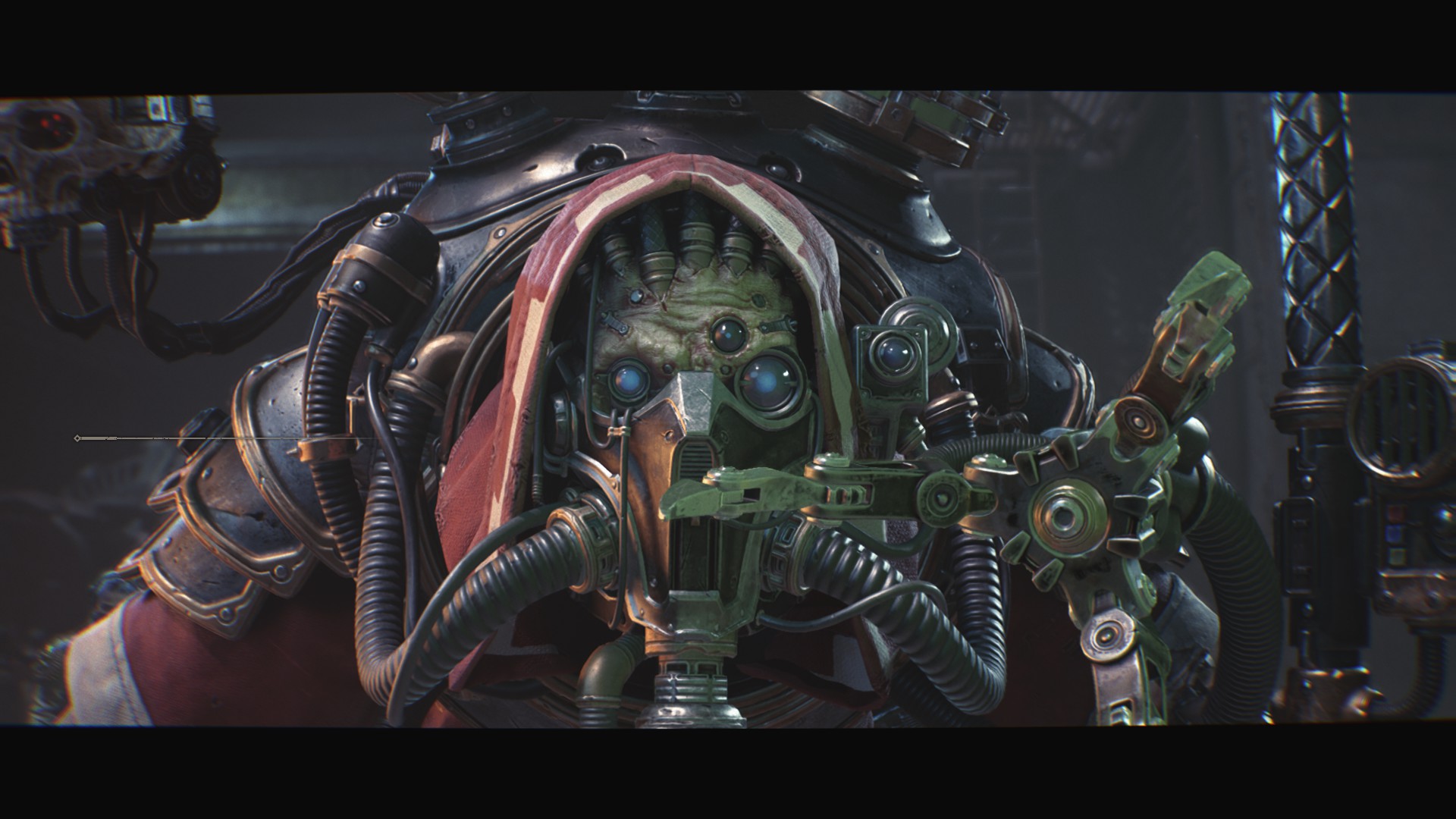
In some ways it’s authentic to a fault, even—it’s likely to be too in-depth for those unfamiliar with the universe, or even just more casual Warhammer fans.
What does shine through is how passionate and knowledgeable about this setting Saber Interactive is. Though the story is fairly thin (essentially Titus is just in the middle of a big war trying to prevent the use of a dangerous macguffin) it nails both the broad strokes of how Warhammer 40,000 should feel, and its quieter, more nuanced elements.
More often than not, videogames in this setting simply tell stories of heroic Imperials fighting against the forces of pure evil. So it was a pleasant surprise to see this game incorporate themes such as the simmering tension between the space marines and the Adeptus Mechanicus, a divergent cult needed for their engineering prowess but with their own inscrutable ambitions. Or the low-level internal politics within Titus’ chapter, around questions of faith, corruption, and his own murky past. Or the strange layers of superstition and ignorance that hamper the Imperium’s relationship with its own technology—there’s something both poignant and funny about such powerful warriors having to follow awkward automated bureaucratic processes to get a machine started in the middle of a warzone, or offer some burnt incense and a prayer before accessing classified computer files.
In some ways it’s authentic to a fault, even—it’s likely to be too in-depth for those unfamiliar with the universe, or even just more casual Warhammer fans. The game spends almost no time on exposition about the setting, trusting players to have done their homework, and it doesn’t shy away from more obscure or complex reference points. If you don’t know how the Deathwatch works and why being a Blackshield in it would be shameful, or the function of a Neurothrope in the synaptic network of the Tyranids, or the reason that a soldier of the Thousand Sons would have no corporeal body inside their armour… then you’re likely to find yourself confused not just by the details of the plot but by what you see in fights, too.
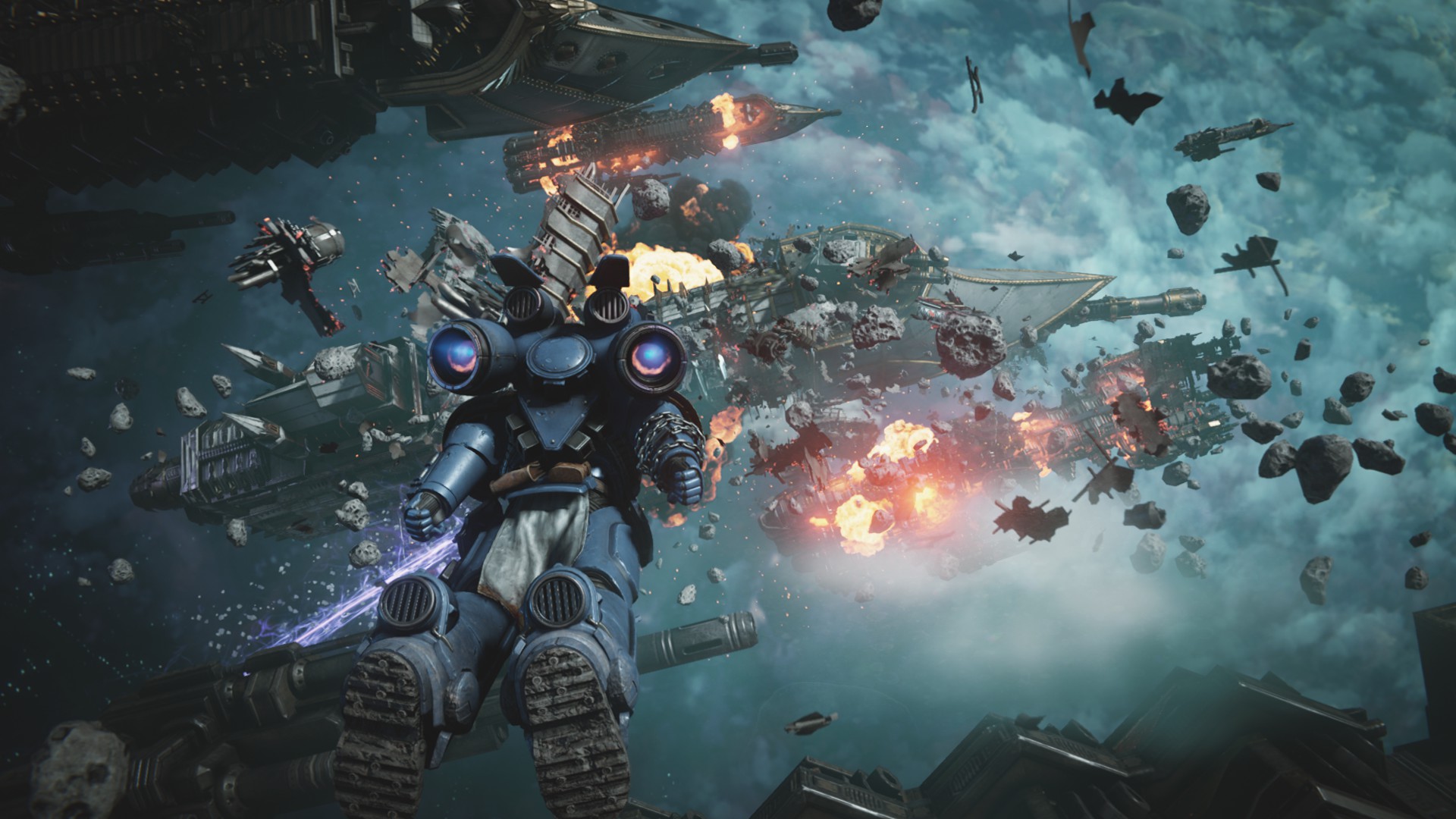
For those who are dedicated Warhammer 40,000 aficionados, however, there’s a real thrill in such a major game not only representing the setting so well but refusing to compromise on it for a mainstream audience. Space Marine 2 revels in the specifics of Games Workshop’s universe in a way I think very few games ever have, and that’s something the community is sure to take to heart even if the overall experience is flawed.
But while that atmosphere and authenticity never breaks, like the combat the story increasingly loses its way as the game goes on. It has an odd structure—by the end of the second act, any intrigue and mystery in the plot has been fully resolved already, and the character arcs of your companions have concluded. (Titus himself doesn’t have an arc—he’s just always right, and spends the game stoically waiting for everyone else to realise.) That leaves the third act with nothing to do but try and escalate all the fighting and shouting and apocalyptic threats ever higher and higher, and though the visuals are mostly impressive enough to back it up, it does all start to feel like so much noise.
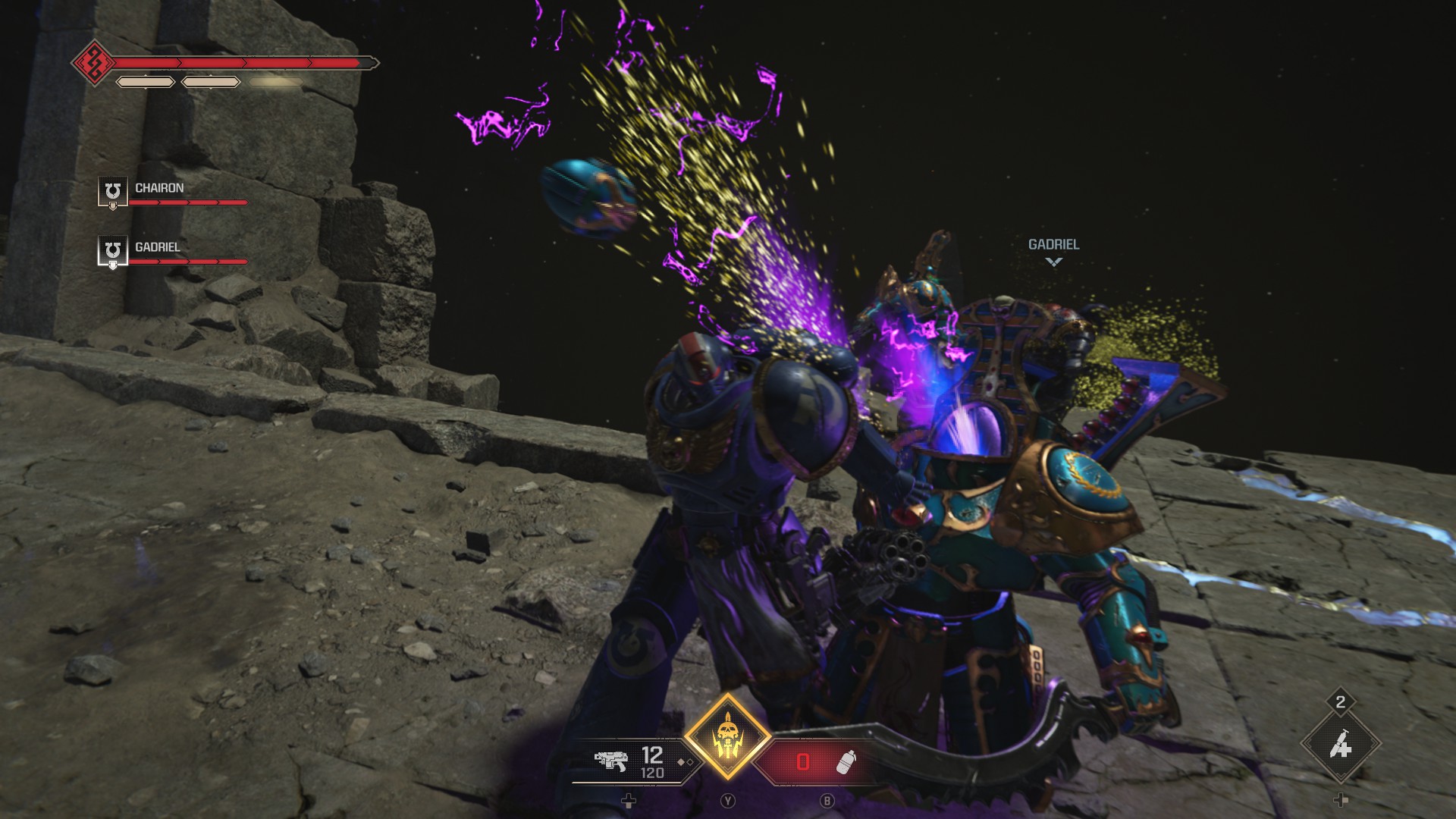
It’s not helped by an increasing shift in focus over the course of the game from the tyranids to the forces of Chaos—specifically the Thousand Sons, worshippers of the god of magic and scheming, Tzeentch. Compared to the utterly alien tyranids, this dark cult offers a more understandable foe, but their plans are frustratingly underbaked, and in a game with so many surprisingly nuanced details, its key villains are oddly two-dimensional.
Worse, they’re simply a lot less fun to fight than the bugs. Chaos space marines, your evil counterparts, are unflinching damage sponges that put out heaps of near-unavoidable ranged damage—they’re sent at you in increasingly large waves, and of course you’ll need to perform a lengthy execution on every single one of them to stay alive. The point at which the combat is most wearing out its welcome is the point where the game goes all-in on its least satisfying enemies.
Squad game
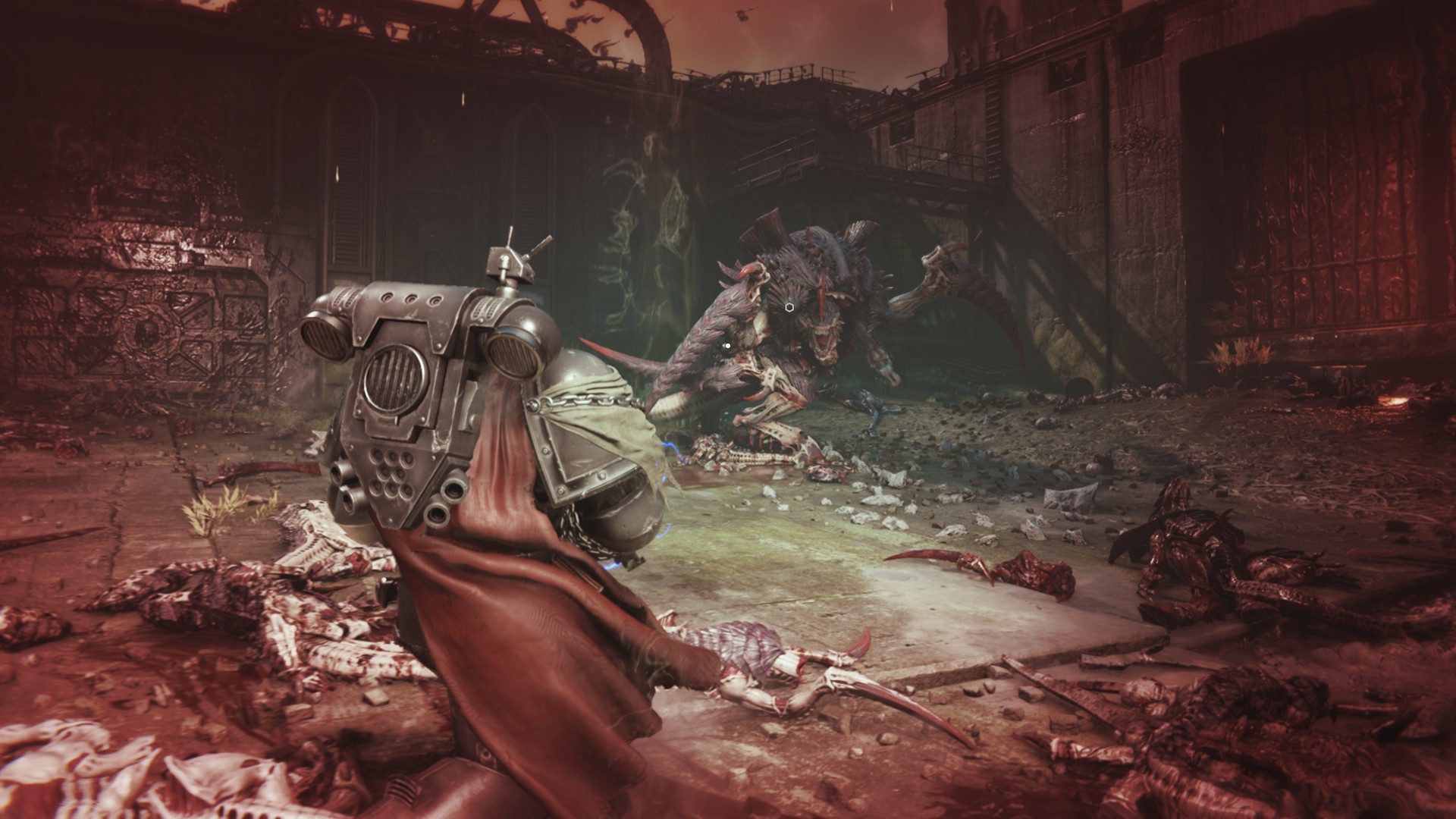
The game also has a PvP multiplayer mode, pitting loyalist space marines against chaos space marines of various legions. Unfortunately I wasn’t able to test this at all as part of my review, because the playerbase was too small in the pre-launch period. This score therefore doesn’t account for PvP. To be honest I will be very surprised if these combat mechanics translate into a satisfying competitive experience, but I’ll be giving the mode a go later this week and posting my impressions soon.
Throughout the campaign, Titus sends another small team out to complete vital objectives that intersect with his own. This is your cue to hop over into the separate but narratively interwoven co-op mode, where you can play out these missions with up to two friends as one of six different Space Marine classes. While in the story Titus is battling to reach the astropaths to send a message off-world, for example, you can play out the effort to destroy signal jammers around the area, or perform the assassination of a Hive Tyrant that clears the way for him to get there.
It’s an interesting idea, and does add some extra drama to the six co-op missions. There is fun to be had, too, in the sheer chaos of three player-controlled marines crashing around taking on even greater numbers of foes, and at least the mission objectives that feel contrived in the singleplayer fit more neatly in multiplayer. There’s no less attention to detail in the visuals and setpieces, either—there are moments in the co-op that feel just as spectacular and must-see as anything in the campaign.
It’s clear Saber Interactive’s hope is that this is where players will end up sinking a lot of time into the game. Unlike the singleplayer, co-op has currencies to earn, weapons to unlock, and other forms of progression to keep you coming back—and there’s more content planned for release post-launch.
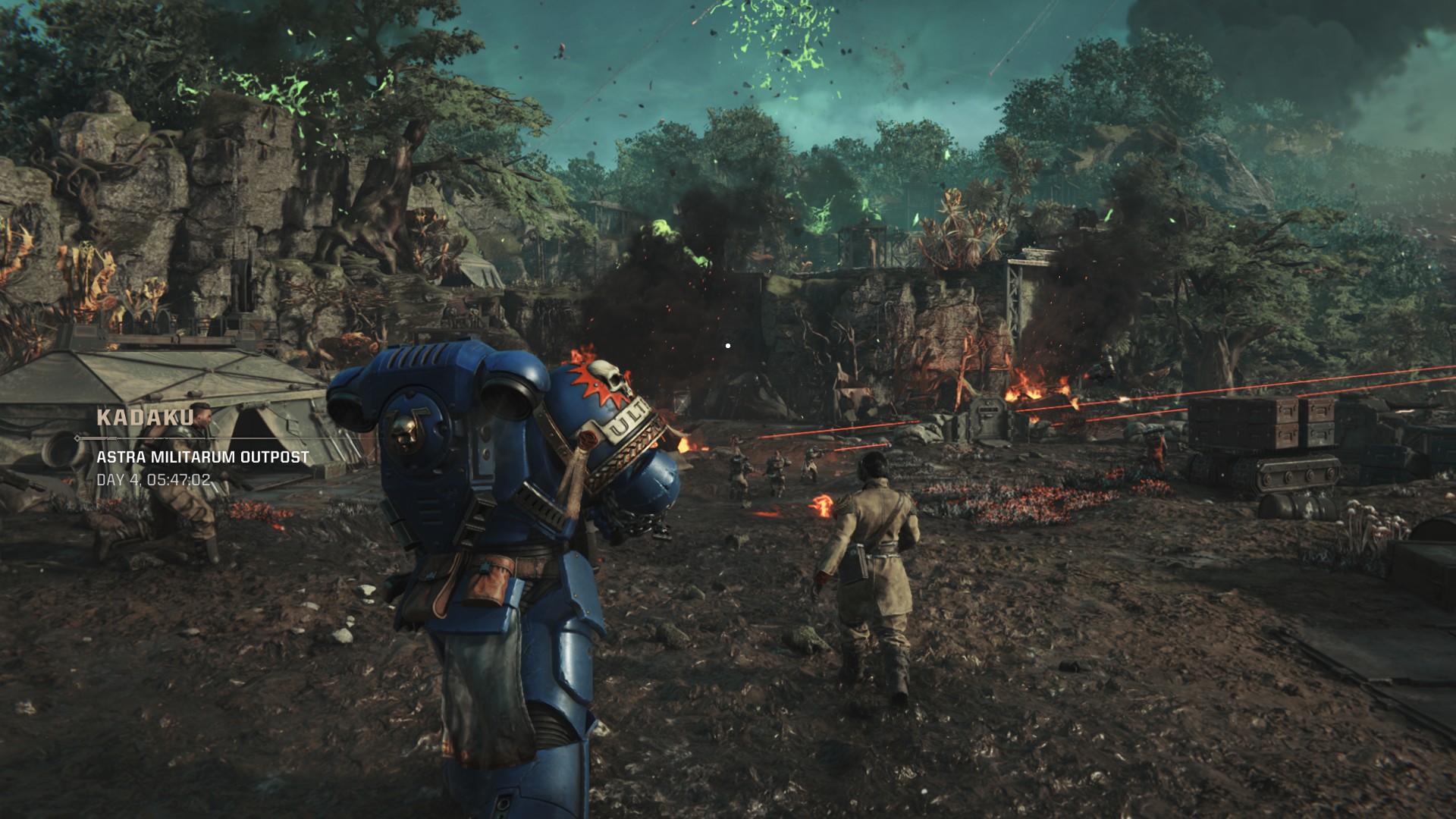
After playing each of the six missions for the first time, however, I already felt I’d essentially seen everything co-op has to offer. Those problems with the combat system are even more pronounced in a mode that pushes you to test your skills (and includes two people ready to steal your executions), and compared to the Warhammer co-op elephant-in-the-room Darktide there just isn’t the depth here to dig into over a long period of time, either in the action or in the very linear levelling.
Though the missions are very cinematic, one of the consequences of that is they don’t really have the variability to stand up to repeated replaying—once you’ve seen the cool things once, they’ll be the same again next time you see them. But even on your first play you’ll notice serious problems with how each mission is paced. Where Darktide has a natural ebb and flow, interspersing intense fights with moments of eerie quiet, Space Marine 2 feels like it’s spawning enemies haphazardly just to try and keep you busy.
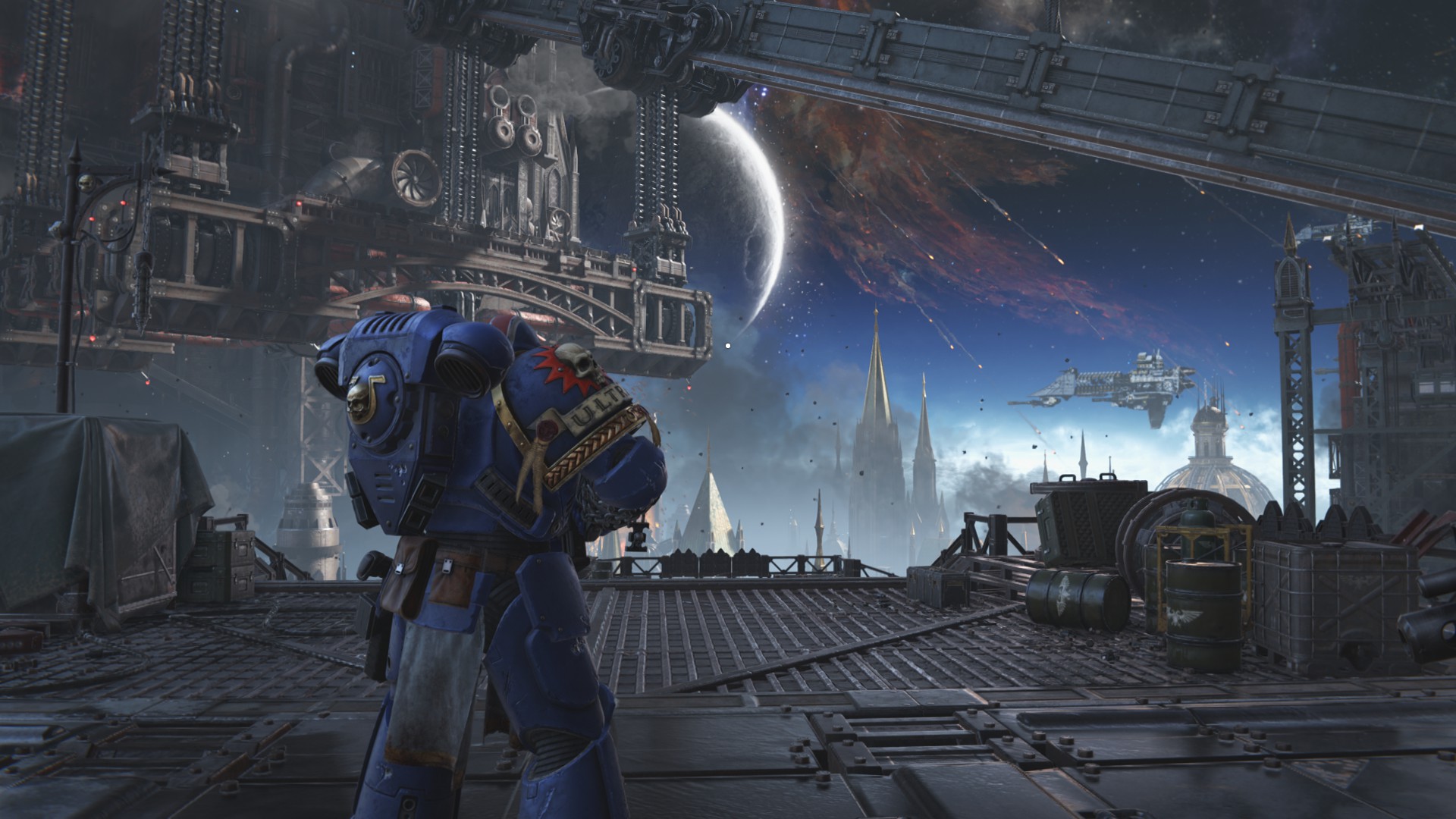
The result is that missions feel oddly flat, existing at much the same level of action throughout and inevitably ending with the three players present saying “Oh, I guess that was the end?” when it suddenly cuts to the outro cinematic.
Following the fairly short singleplayer campaign, I was hoping the co-op would make Space Marine 2 a more complete package, but it feels just as fire-and-forget—worth trying for its cool, cinematic moments and the initial rush of the action, but wearing out its welcome a while before its roughly five hours of content is up. Future updates will add more to do and may smooth off some of the rough edges, but I’ll be surprised if they can improve the core systems and mission design enough to give the mode the depth it would need for long term play.
Old soldiers
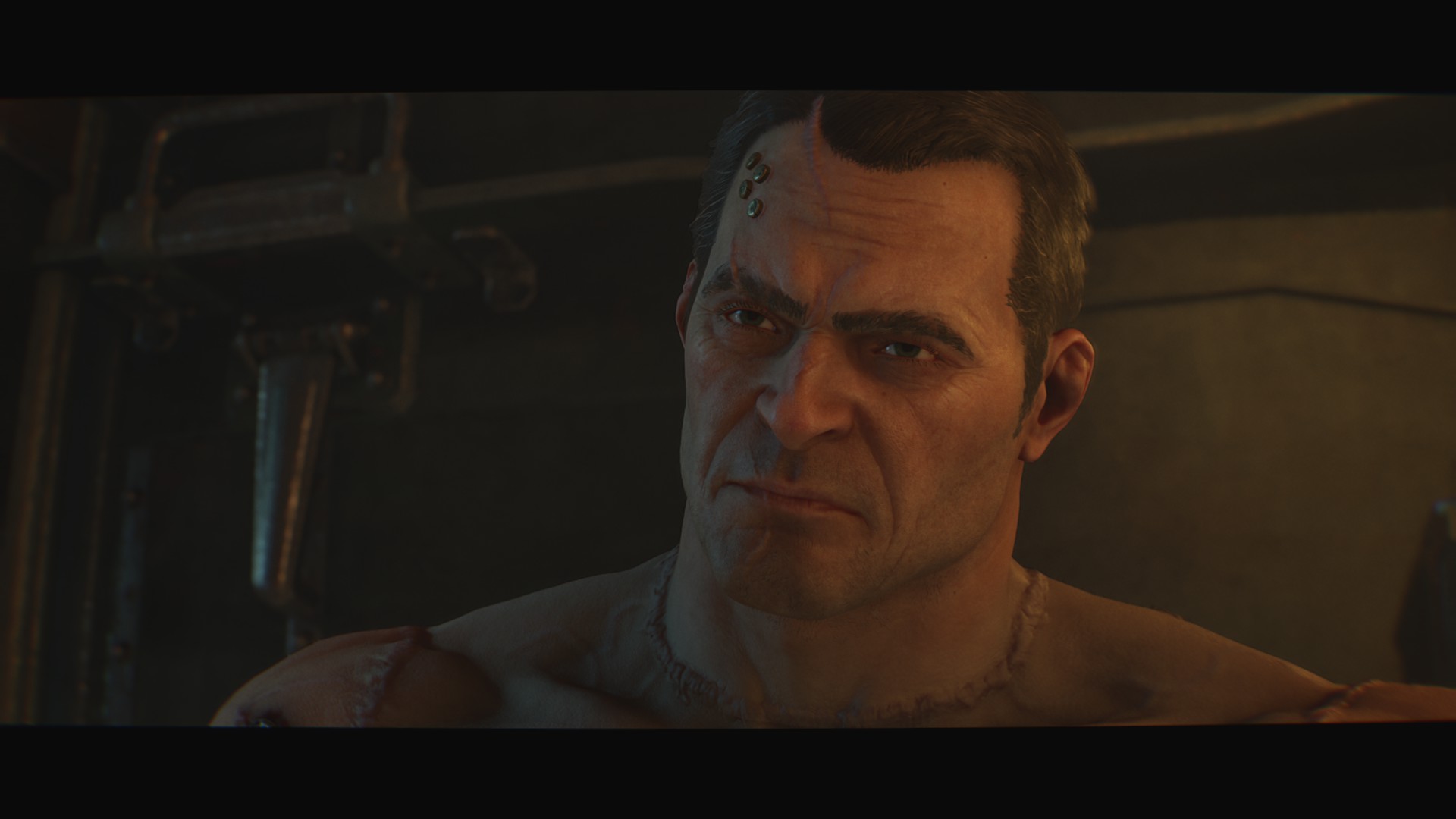
And yet there are moments in Space Marine 2 that I think every fan of Warhammer 40,000 owes it to themselves to see.
Though the original Space Marine, from developer Relic Entertainment, is remembered fondly, it too certainly had its flaws. So I decided I'd finish off my review by going back to the now 13-year-old game and seeing how they compare. What I discovered is that, though its sequel easily beats it for visual splendour, ambition, and authenticity to the setting, the original is simply far more fun to play. Combat has a clearer rhythm that feels far more under the player's control, and though it's shallower, it benefits from being less cluttered with overlapping systems. That's damning—after more than a decade of advancements in gaming design and technology, I'd still rather fight orks on Graia than tyranids on Kadaku.
And yet there are moments in Space Marine 2 that I think every fan of Warhammer 40,000 owes it to themselves to see. It's rough and uneven, but still operating on a grander scale and level of production value than we've ever seen from the setting before. It puts me in the odd position of feeling that this is fundamentally not a good game, but one that I think will still be a great source of joy for its intended audience.
As a few hours of seeing cool stuff, feeling big, and nerding out before it runs out of steam, Space Marine 2 is a decent bit of fun. But at full price, and after 13 years since the original, I think you'd expect a bit more than that. I commend Saber Interactive for its clearly genuine and deep love for Warhammer 40,000, but though it's done right by the venerable setting, I wish as much care had been put into the parts I actually get to control.

